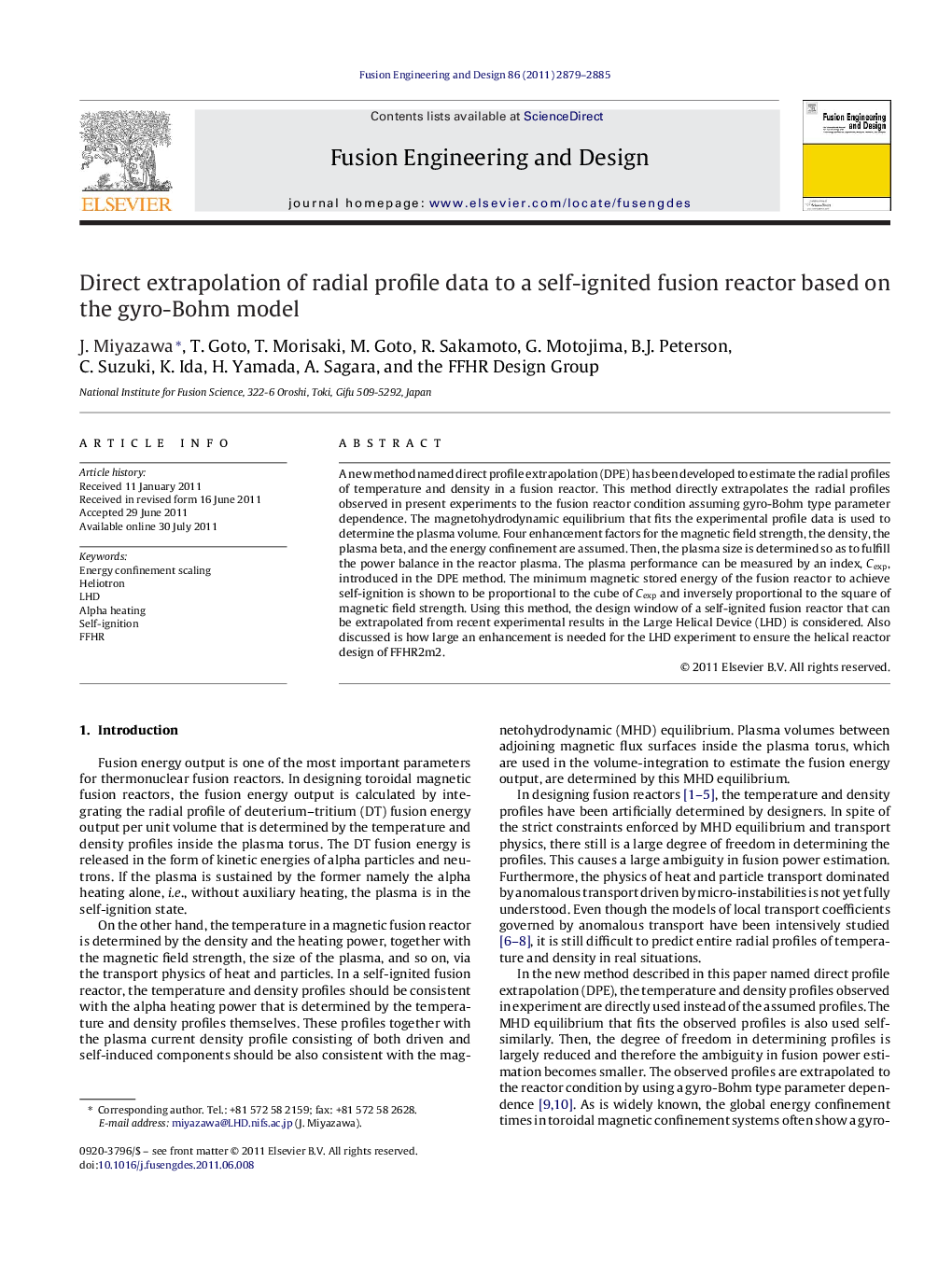| Article ID | Journal | Published Year | Pages | File Type |
|---|---|---|---|---|
| 272414 | Fusion Engineering and Design | 2011 | 7 Pages |
A new method named direct profile extrapolation (DPE) has been developed to estimate the radial profiles of temperature and density in a fusion reactor. This method directly extrapolates the radial profiles observed in present experiments to the fusion reactor condition assuming gyro-Bohm type parameter dependence. The magnetohydrodynamic equilibrium that fits the experimental profile data is used to determine the plasma volume. Four enhancement factors for the magnetic field strength, the density, the plasma beta, and the energy confinement are assumed. Then, the plasma size is determined so as to fulfill the power balance in the reactor plasma. The plasma performance can be measured by an index, Cexp, introduced in the DPE method. The minimum magnetic stored energy of the fusion reactor to achieve self-ignition is shown to be proportional to the cube of Cexp and inversely proportional to the square of magnetic field strength. Using this method, the design window of a self-ignited fusion reactor that can be extrapolated from recent experimental results in the Large Helical Device (LHD) is considered. Also discussed is how large an enhancement is needed for the LHD experiment to ensure the helical reactor design of FFHR2m2.
► The DPE method predicts temperature and density profiles in a fusion reactor. ► This method is based on the gyro-Bohm type parameter dependence. ► The size of fusion reactor is determined to fulfill the power balance. ► The reactor size is proportional to a factor and −4/3 power of the magnetic field. ► This factor can be a measure of plasma performance like the fusion triple product.
